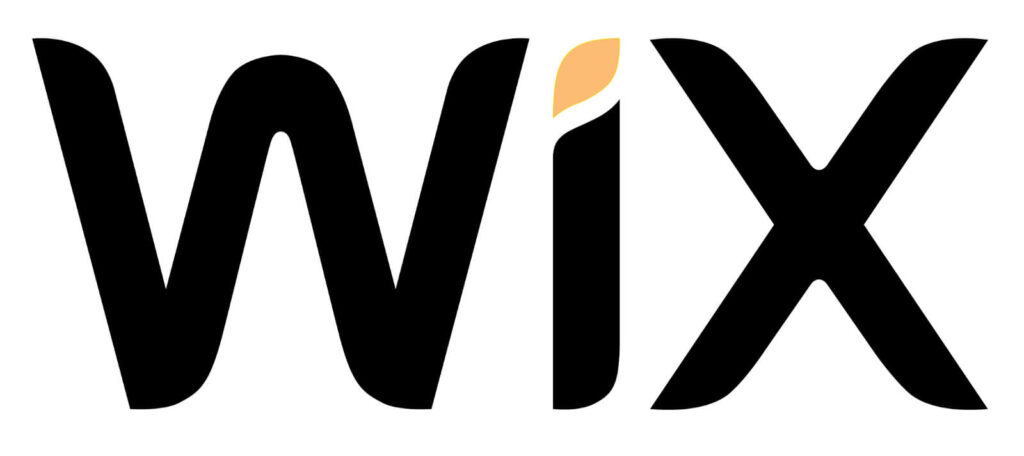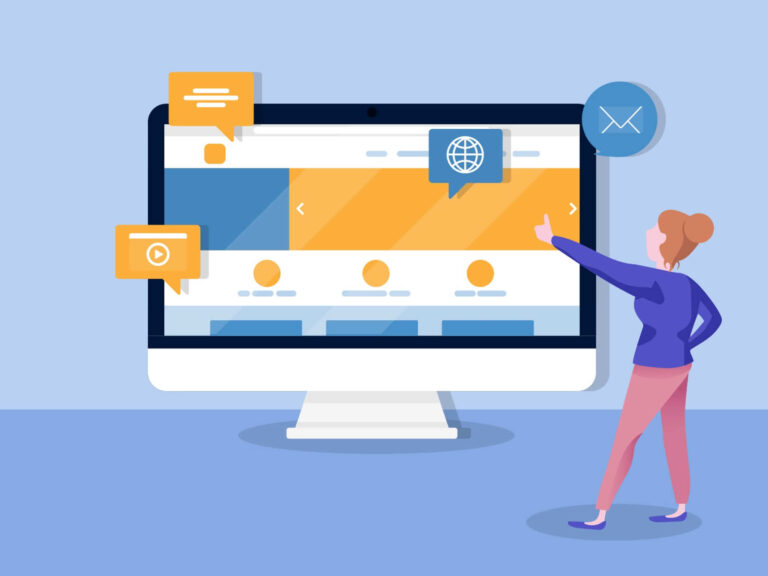The absolute best web design software is crucial for making your work run as expected and effectively. As such it is worth taking the investment to review your design toolkit every so often, to ensure you’re not missing a trick. All things considered, if another web design device can make even a little improvement to the speed you complete your work, it could save you genuine time and cash in the long haul.
In this article, we feature the best web design software available today that spans from site engineers to
What we will see here?
What is Web Design Software?
Web design software gives users the tools to make, edit, and update web pages. Website specialists will use these tasks to make a page’s layout and content through either modifying HTML or a WYSIWYG proofreader. Organizations working without a website builder Device will require a designer to build and manage with the HTML and CSS system for their website. These products incorporate features for editing code and visualizing projects. Many will likewise have systems and templates to help with making the website’s essential structure, just as component libraries with templates or shortcodes to save time during the design interaction. Web design software gives a more independent, adjustable platform than website builders, yet shares some comparative features. Web design software normally takes into account bringing in code from tools like text editors or visual components from design tools such as vector graphics tools.
1. Wix

This is our top pick of the web builder, and web design software overall – Wix is perhaps the most famous webpage maker. It offers a scope of payment levels (including ‘free’), with befitting features. With the entry-level free version, you’ll need to arrange Wix adverts and a 500GB space cap. Yet pay just $6, and you’ll bypass the promotions, have a free domain for a year, get 2GB bandwidth, and 3Gb storage space.
There are dependent upon 500 templates to look over and you can undoubtedly begin customizing with animations, picture editing, social media buttons, and different backgrounds– with a lot of additional choices to change also.
We love the instinctive design of this web developer, and with the abundance of customizations, and heaps of beautiful straight-out-the-pack templates on offer, it’s a cracking website manufacturer for all levels of capacity.
Pros
- Easy to use
- User-friendly
- Loads of features
Cons
- Empty List
2. Adobe Dreamweaver

Adobe Dreamweaver is a since a long time ago settled app that grants you to code your web composition directly, without knowing a great deal about programming. The software deals with a blend of visual editing and HTML editing which implies it shouldn’t have too steep an expectation to learn and curve for most clients.
Dreamweaver, accessible for Windows and Mac operating systems, consolidates both a “what you see is the what you get” (WYSIWYG) visual interface of interaction and a clean, color-coded text editor to work straightforwardly on the code.
HTML, CSS, JavaScript, and more languages are supported.
One of Dreamweaver’s fundamental qualities is its live preview. With it, you can see precisely how your site will look and function, across an assortment of platforms, before it’s published. It is viable with pretty much any ordinarily utilized browser, and support for responsive design implies your site adjusts to the size of the screen it’s being seen on, regardless of whether that is on a desktop, tablet, or cell phone. There is a learning curve to the software. Yet when you’re familiar with it, the most common way of building a website is straightforward and smoothed out.
As it’s important for
pros
- Customize your design
- Build a responsive design
- HTML5 support
Cons
- Not cheap
3. WordPress

WordPress is an elective method for setting up and designing your website, being somewhat different from other offerings we’ve featured here on the grounds that it’s really a content management system (CMS). The power here is that it is a straightforward make a difference to set up a website in minutes. WordPress is moderately simple to install.
Once installed, the backend for the organization and the management is extremely easy to use. You can utilize the current WordPress design templates for your website, however more probable you will need to download and install a current free or premium WordPress template, which would all be able to be done with two or three snaps.
Regardless of whether you would like to work with your own design, you can frequently do such utilizing drag-and-drop functions, ordinarily from a downloaded design with an in-built structure. This can allow you to make a specialist-looking site without getting the hang of programming or coding using any and all means.
Even better, there are so many free add-ons accessible to download and install, regularly requiring just a couple of snaps. This makes the entire process of customizing your website exceptionally basic, and it doesn’t need any expert abilities.
Generally speaking, WordPress is an exceptionally simple CMS to utilize and can give an extremely speedy method for getting any type of website online quickly. The huge assortment of template designs and extra community-supported features imply that getting something close to the mark of what you need isn’t hard in any way. Simply guarantee that in the settings you select to switch off comments to stay away from spam.
Pros
- Easy to install and use
- Many available features
- Pre-built website templates
Cons
- Watch out for spam
4. Bootstrap Studio

Bootstrap Studio is the WYSIWYG desktop editor from Bootstrap, a well-known and open-source front-end framework. It incorporates a canvas area, a running parts list, and a window for displaying/writing code. It’s an ideal app for designing and making couples inside the Bootstrap system, allowing you to test your site as you work.
Regardless of whether web development isn’t in your range of abilities, Bootstrap Studio simplifies the web design process with drag-and-drop components, customizable templates, and a library of premade webpage parts. Notwithstanding, in light of the fact that it writes formatting language continuously, moving components around isn’t consistently just about as natural as some other apps.
Over the long haul, it requires some comprehension of how front-end development works, regardless of whether you are just dragging and dropping.
Pros
- The straightforward and natural interface
- The visual design makes front-end development straightforward
- Accompanies hosting platform Bootstrap Studio Sites and incorporates custom domains
- Delivers formatting and scripting files that can be moved to a website immediately
Cons
- Fewer theme choices than WordPress
- Requires some information on coding and formatting languages to investigate
- Not great for more complicated web design projects
5. Webflow

Webflow is cloud-based assistance that has been made specifically to permit individuals with no coding information to get everything rolling with web design.
One more web-based choice that is ideal for beginners needing to make a quality website with the insignificant fights. As is normal with the best web design software, there’s a super-simple to-utilize drag and drop approach to building a Webflow website, utilizing a considerable lot of their thoroughly examined templates.
You can begin making a website with Webflow with zero coding experience. Yet there’s space to move if you need to get to discover a bit more with regards to coding. There’s likewise a convenient, free demonstration of every one of Webflow’s features at the snap of a button, so you can make a beeline for the webpage and check whether what it has to offer is for you, without spending any cash. From that point, you can make two sites so that free might be able to see the features in real life, and afterward, it’ll cost you to fabricate more.
Webflow offers a free demonstration of its features through the website, and you can likewise subscribe for a free Starter package which permits you to make up to two projects.
Pros
- Cross-platform
- Easy drag and drop
Cons
- There are better interfaces
6. Bluefish

Bluefish is among the littlest web design tools accessible today. The little installer takes a couple of seconds to set up. While the interface is text-just, it’s plainly designed considering tenderfoots as it utilizes obvious toolbars, user-customizable menus, and syntax featuring.
While the main focus is around HTML, Bluefish supports a tremendous scope of different languages. These include PHP, Java, JavaScript, SQL, XML, and CSS. Not at all like visual WYSIWYG web design devices, the text interface makes for much cleaner code.
Bluefish has great inquiry work, permitting you to track down text across numerous projects. The tools likewise experience no difficulty juggling many records simultaneously. In spite of the fact that Bluefish supports working with remote files. They differed and helpful dialogs and wizards don’t as of now support the direct transfer of web pages through FTP.
Notwithstanding the best efforts of the developers, Bluefish might set aside some effort to become accustomed to. The tool is accessible free of charge. In any case, so you don’t have anything to lose by checking it out.
Pros
- Lightweight and quick
- Use advanced code via wizards
Cons
- No visual interface
7. Visual Studio Code

Visual Studio Code (or VScode) has become famous among developers – the ones who aren’t put off by the way that it’s a Microsoft product, in any case. It offers an assortment of packages and free extensions. These extensions can be downloaded from its commercial center to add extra features. And the code editor itself can be customized.
While many individuals might be implied by coding if they have no programming experience. Sooner or later in the web design process, it very well may be essential to have the option to edit code straightforwardly. This is especially useful if you need to customize code for existing software add-ons to get the features you need for your website. Visual Studio Code can assist with making the interaction less painful by giving a dedicated platform to coding.
Visual Studio Code sports its own terminal and debugger upholds linting and has practical dexterity with all methods of source control tools. It particularly offers great help for Javascript and Python. Making it possibly valuable not only for coding the frontend of a website yet additionally for possibly some backend capacities also.
Pros
- Customizable
- Loads of integrations
- Source control tools
Cons
- Shows warnings and errors on the code
- It is very hard to disable telemetry
Conclusion
The best web design software simplifies it and simple to build a website, either by offering a coding platform, or a drag-and-drop point of interaction.
It used to be the situation that the main choice was to code a website coordinating, using HTML and CSS, and even JavaScript. Nonetheless, these days simplified editors have become impressively more normal, making it a breeze for anyone to modify.
Whichever choice you like, every one of them makes it simpler to build in the components you need on your website and can work with extra devices such as form builders, image hosting, and even content delivery networks. Here hope we have got you covered with the best web design tools right now accessible.
















